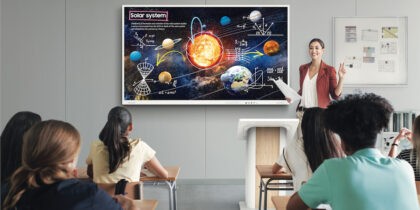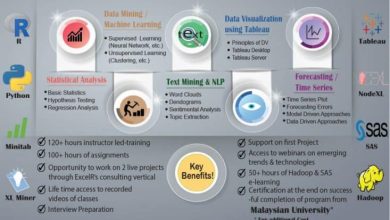Think back to your own school days. Remember sitting in class, staring at a chalkboard or projector screen while the teacher talked? If you’re like most of us, you probably remember some classes that felt endless. It’s not that the content wasn’t important—it was just hard to stay engaged when all you could do was watch and listen, without much chance to participate. Well, times have changed. Today, we have the technology to make learning far more interactive, engaging, and even fun. And at the heart of this change are tools like the interactive panel.
From Chalkboards to Interactive Flat Panels
For years, classrooms were dominated by chalkboards, then whiteboards, and eventually projectors. While each step forward made it easier to share information, they all had something in common: students were mainly passive recipients of information. They could watch, listen, maybe take notes, but they weren’t truly part of the action. Fast forward to today, and we have interactive flat panels that completely change this dynamic.
Imagine a classroom where every student can interact directly with the content on the screen. It’s no longer just about watching a teacher point to something on a projector. With an interactive flat panel, students can walk up, touch the screen, move objects, draw, write, and solve problems right there in front of their peers. It’s a whole different kind of experience—one where students are actively involved in the learning process, and not just watching from the sidelines.
Why Passive Learning Just Isn’t Enough Anymore
Let’s face it: our world is more connected and more digital than ever. Students today are used to interacting with technology all the time. They play games, communicate with friends, and explore their interests online—all in a highly interactive way. So, when they enter a classroom that only offers a passive learning experience, there’s a disconnect. It’s like stepping back in time.
But with an interactive panel, the classroom becomes an environment that fits the way today’s students learn. Instead of being passive listeners, they become active participants. This shift is critical for making lessons more engaging and ensuring that students actually understand and retain what they’re being taught.
How Interactive Panels Boost Engagement
One of the most powerful aspects of interactive flat panels is how they boost engagement. Take a math lesson, for example. Instead of the teacher standing at the front of the class explaining a concept, students can come up to the panel and solve problems themselves, manipulating numbers and shapes in real-time. When learning becomes hands-on, it’s easier for students to understand difficult concepts.
And it’s not just about math. Interactive panels can make reading lessons more fun, science more exploratory, and history more immersive. Imagine exploring a 3D map of ancient civilizations, zooming in and interacting with important landmarks—all on an interactive panel. Students are more likely to be interested, ask questions, and dive deeper when they’re involved in their own learning.
Collaboration and Teamwork
Another game-changing feature of interactive flat panels is their ability to facilitate collaboration. Modern classrooms emphasize not just individual learning, but also teamwork and group problem-solving. Interactive panels are perfect for this, as they allow multiple students to work on the same screen at once.
For instance, during a group activity, several students can come up to the front, each using different parts of the screen to contribute to a project. Whether it’s brainstorming ideas, solving puzzles, or creating digital art, the panel becomes a space where collaboration happens naturally. This not only builds academic skills but also essential life skills like communication, cooperation, and creative problem-solving.
Empowering Teachers with New Tools
While interactive flat panels are amazing for students, they’re also incredibly powerful tools for teachers. The digital world has made it easier for teachers to access resources, and interactive panels help them use these resources in the most effective way. Teachers can pull up videos, images, websites, quizzes—whatever they need to make the lesson more dynamic—right on the panel.
Additionally, interactive panels often come with built-in educational apps and tools that can make lesson planning easier and save teachers valuable time. Imagine being able to pull up a graph to explain a science concept, instantly annotate it, and save that version of the graph to share with students later. These tools not only enhance the quality of teaching but also make it easier for teachers to adapt lessons to suit different learning styles and needs.
Making Learning Fun Again
When learning becomes interactive, it also becomes more enjoyable. Interactive panels make it possible to turn lessons into games, where students earn points for answering questions or solve puzzles to learn new concepts. This element of play can be especially important for younger students, who may struggle to stay focused in a traditional classroom setting. By turning learning into something fun and rewarding, interactive panels help build a love for learning that can last a lifetime.
The Future of Education is Here
There’s no question that interactive flat panels are helping redefine what’s possible in the classroom. They’re turning what was once a passive, one-way transfer of knowledge into a dynamic, engaging experience. For teachers, they’re providing new ways to connect with students and make lessons more impactful. For students, they’re transforming the classroom into a place of discovery, interaction, and creativity.
We’re at a point where technology in the classroom is no longer optional—it’s essential. And while projectors and whiteboards had their time, the future belongs to tools like interactive panels that make learning more than just watching and listening. It’s about doing, experimenting, questioning, and exploring.
Conclusion: Let’s Give Our Students What They Deserve
Our students deserve more than a classroom stuck in the past. They deserve a place where they can engage, explore, and truly be a part of their own education. Interactive flat panel offer exactly that: an opportunity to move from passive to interactive learning, tapping into the full potential of every student.
It’s time we let go of the old tools and embrace what technology can do for education. The future is bright, and with interactive panels in the classroom, it’s more engaging, inclusive, and inspiring than ever. Let’s give our students the learning experience they deserve.





